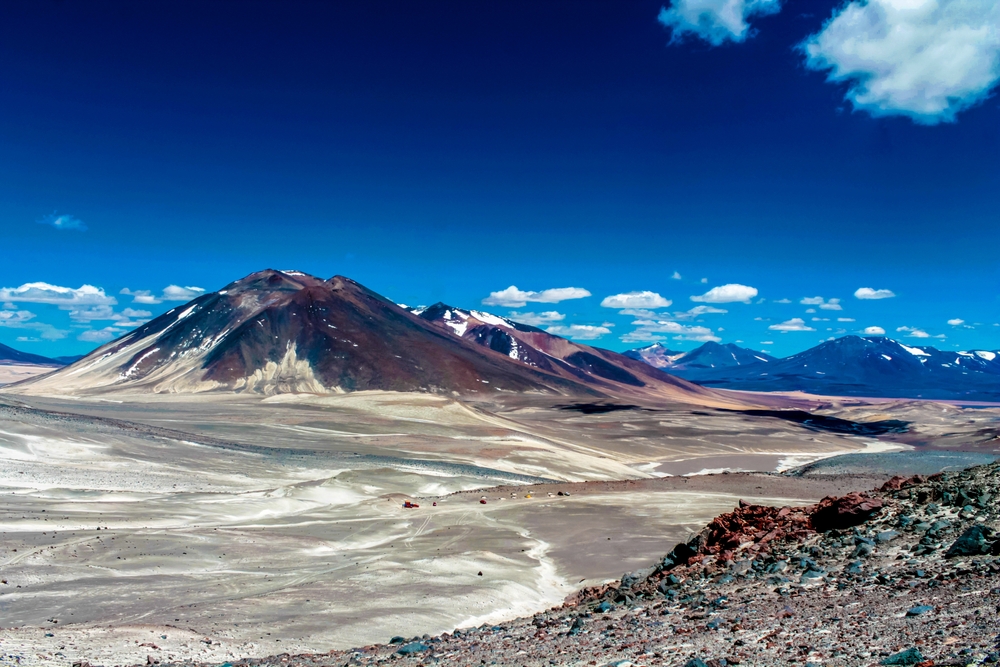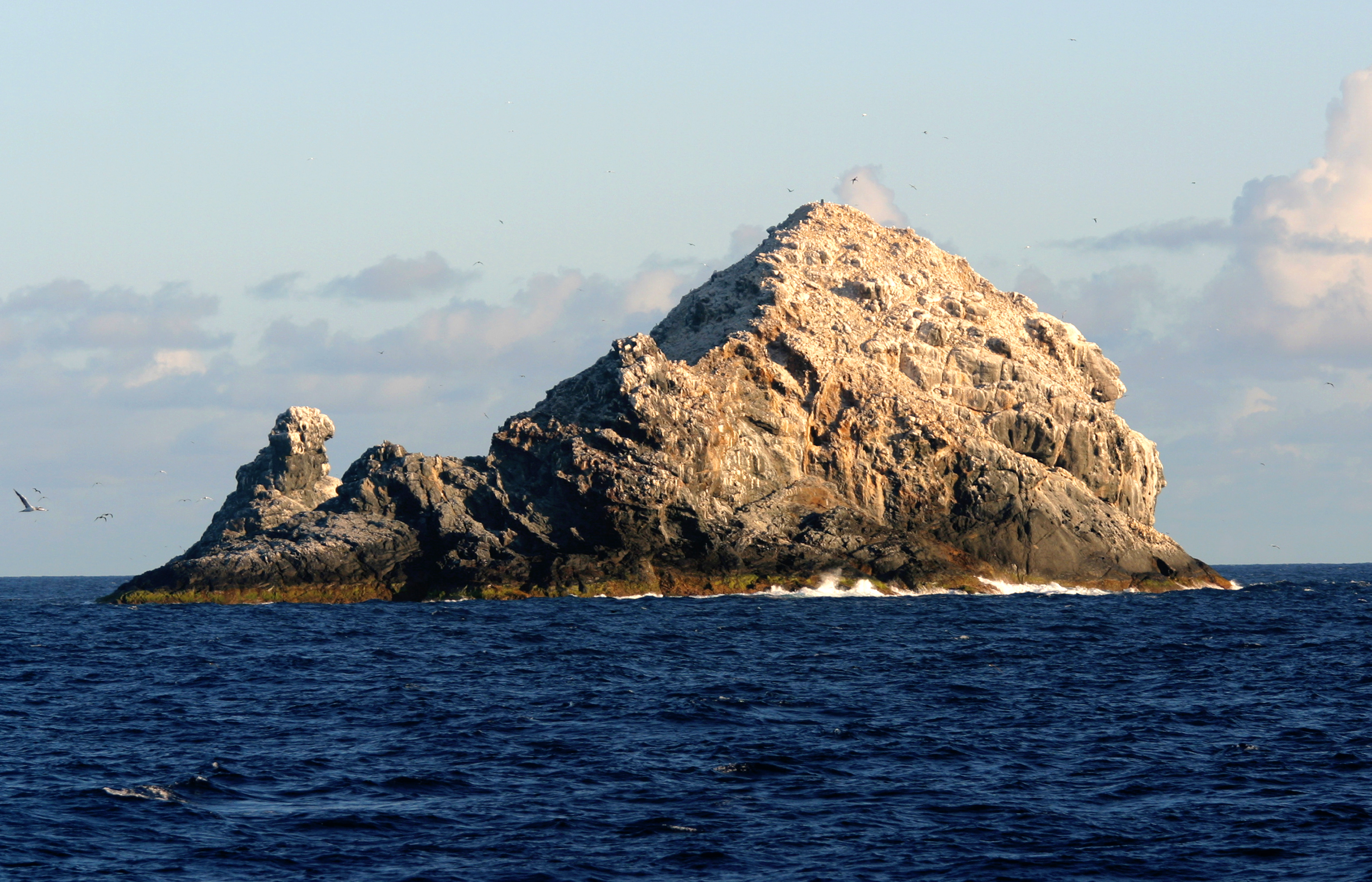What’s the biggest volcano in the world? Well, it depends on how you measure. Highest, biggest, most massive; they all have different answers – and each is as fascinating as the last.
Highest volcano
Sea level to peak, there’s a clear winner for the highest volcano: it’s Nevado Ojos del Salado, on the border between Chile and Argentina.

The Ojos del Salado volcano.
Image Credit: Julia Mountain Photo/Shutterstock.com
With a summit 6,879 meters above sea level – that’s 22,569 feet, 4.3 miles, or just for laughs, about 18 Empire State Buildings – there are few peaks that can even come close to that of Nevados Ojos del Salado. Those that can, however, are all pretty nearby, with runner-up Llullaillaco just 267 km (166 miles) to the north and the third- and fourth-highest volcanoes even closer.
If that all sounds remarkably coincidental to you, then allow us to explain. As you may have guessed from their location, these volcanoes are all in the Andes, home of quite a few of Earth’s “highest X” records. Running along the Western edge of South America, these mountains – and the volcanoes that dot their peaks – are the result of their placement on the Pacific Ring of Fire.
“The Andes […] run parallel to the Peru-Chile Trench, created as the Nazca Plate subducts beneath the South American Plate,” explains National Geographic. As the denser Nazca Plate is forced underneath, it heats and melts into magma, eventually escaping as a volcanic explosion. At the same time, the South American plate is compressed by the movement and buckles up into mountains – a process known as orogeny (and specifically as Andean-type orogeny, since this particular mountain range typifies it so well).
The result: a bunch of volcanoes, found way higher than sea level.
“The summits of the world’s twenty highest Holocene volcanoes are all constructed above the structural highs of the Andes mountains,” notes the Smithsonian Institution. While Llullaillaco is more active than Nevados Ojos del Salado – and by “active”, we only mean that it erupted three times more than 100 years ago – the latter “is rightfully the world’s highest volcano,” the Institute confirms, with “its lack of historical eruptions stem[ming] only from its remote location.”
In fact, you can go even more technical and nitpicky – the Andean rage also includes the point on the Earth’s surface which is furthest from the center: Chimborazo, also a volcano, in Ecuador, whose summit is 6,263 meters (20,549 feet) above sea level. That may seem counterintuitive, but as Chimborazo sits on the planet’s equatorial bulge, it’s further from the center than Ojos del Salado despite being closer to sea level.
“The only higher mountain [than Navados Ojos del Salado] in the Americas, Argentina’s Aconcagua at 6,962 m, was listed as active by Darwin during the voyage of the Beagle,” the Smithsonian notes, “but Chilean colleagues tell us that the mountain is not a volcano and its height results from imbricate thrust faulting.”
Tallest volcano
Given Ojos del Salado has the highest peak above sea level, you might be tempted to assume it’s the tallest volcano overall. But just as a toddler atop a ladder isn’t really taller than their parent, it’s a far cry from being the biggest when measured base-to-tip.
Instead, that title – World’s Tallest Volcano – goes to Mauna Loa, Earth’s largest active volcano by both mass and volume. And it really is a beast: “Nevados Ojos del Salado […] rises only about 2,000 [meters, or 6562 feet] above its base,” explains the Smithsonian Institution. “The broad summit of Mauna Loa shield volcano is 2,700 [meters, 8858 feet] lower than Nevados Ojos del Salado, but it’s height above base is almost 10 times that of the Andean volcano.”

The Mauna Loa volcano in Hawaii.
Image Credit: PeopleImages.com – Yuri A/Shutterstock.com
Perhaps surprisingly, this monster-volcano, which is still active, by the way; its last eruption was only in 2022 – is located nowhere along the Pacific Ring of Fire. “Hawaii is in the middle of an oceanic plate,” wrote Gabi Laske, a professor of geophysics at the University of California, San Diego, in a 2022 article for The Conversation. “In fact, it is the most isolated volcanic hot spot on Earth, far away from any plate boundary.”
How, then, has such a huge volcano – indeed, just one of the 15 which make up the islands of Hawaii – managed to turn up in this remote location?
“The crust and mantle that comprise the Pacific Plate cracks at different places as it moves northwestward,” explained Laske. “Beneath Hawaii, magma can move upward through the cracks to feed different volcanoes on the surface.”
“Seismic imaging by research teams I’m involved with has shown that Hawaii’s mantle plume comes from deep inside the mantle,” she continued. “But the plume is not a straight pipe as some concept figures suggest. Instead, it has twists and turns, originally coming from the southeast, but then turning toward the west of Hawaii as the plume reaches into the shallower mantle.”
“Cracks in the Pacific Plate then channel the magma upward toward the magma chamber beneath the island of Hawaii.”
Most massive volcano
Mauna Loa may hold the record of the largest active volcano, but it turns out it’s not the biggest overall – not by a long shot.
It’s pretty close, though – not in size, but in distance. “Pūhāhonu is the most massive volcano on Earth,” Michael Garcia, a Professor in the Volcanology, Geochemistry, and Petrology department of the University of Hawai’i at Mānoa in Honolulu, told New Scientist in 2020.
Its name means “turtle surfacing for breath” in Hawaiian, and from the right angle you can totally see why: its double pinnacle pokes out of the water like a huge beak gasping at the sky.

Gardner Pinnacles.
It may not look as imposing as Mauna Loa, rising as it does only 52 meters (170 feet) from the sea and being long extinct – it last erupted at least 12.5 million years ago. But a survey carried out by Garcia and colleagues in 2014 found that it has a volume of 148,000 cubic kilometers – about as big as 40 Grand Canyons, and twice the size of Mauna Loa.
Not only is it huge, but back in its heyday, its lava was the hottest in all of the last 66 million years – in fact, that’s how it got so big: “the gargantuan size of Pūhāhonu reflects its high melting temperature, the highest reported for any Cenozoic basalt,” the survey concluded.
And while you might think a long-dead volcano isn’t that impressive or important, no matter how big it claims to be, the survey that discovered its claim to fame had an impact far wider than just this one peak.
“It has been proposed that hotspots that produce volcano chains like Hawai’i undergo progressive cooling over 1-2 million years and then die,” Garcia said in a statement at the time. “However, we have learned from this study that hotspots can undergo pulses of melt production. A small pulse created the Midway cluster of now extinct volcanoes and another, much bigger one created Pūhāhonu.”
“This will rewrite the textbooks on how mantle plumes work.”
Source Link: What's The Biggest Volcano In The World? It Depends How You're Measuring